Discover some of the great wonders of the Andes: the Apus or sacred mountains of Peru.
Peru’s landscape is shaped by the towering presence of the Andes, where the mountains not only create a breathtaking scenery, but also define the spirituality of its people. In the Andean worldview, these peaks are known as Apus—sacred spirits that protect communities and nature.
Mountains like the wild Salkantay or the majestic Ausangate are seen as vital sources of life and essential to the balance of the Andean world. Join us in discovering more about these divine beings and get ready to deeply connect with the spirit of Cusco.
What Are the Apus in Peru?
The Apus in Peru are sacred mountains of the Andean regions, considered significant for their influence on the vital cycles of the areas they overlook.
In Peru, there are many Apus associated with a deity. It is often said that the gods of the Inca empire turned into mountains to protect and eternally nourish the people of their valleys with the waters that flow from their peaks.
The word Apu comes from the Quechua language, the official language of the Inca Empire, and translates as “Lord.” The Incas used this term to refer to mountains and elevated areas of great importance.
These are usually high mountain peaks, since the main deity of the Incas was Inti, the sun god. At the top of the mountains, they felt closer to Inti, making these places sacred spaces for spiritual connection.
These beliefs have been present since pre-Inca times and are still alive today, deeply shaping the culture of Andean communities. In Cusco, the energy of these mountains can be felt both in the imperial city and its surroundings, and the people continue to honor the Apus as a sign of gratitude and respect.
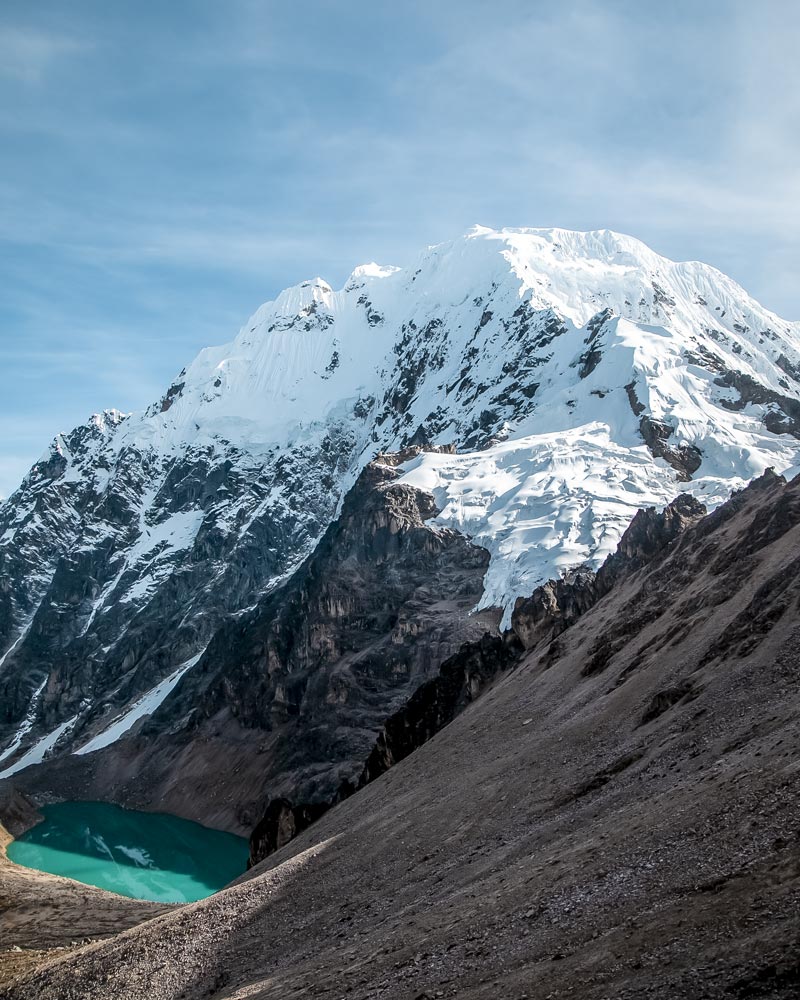
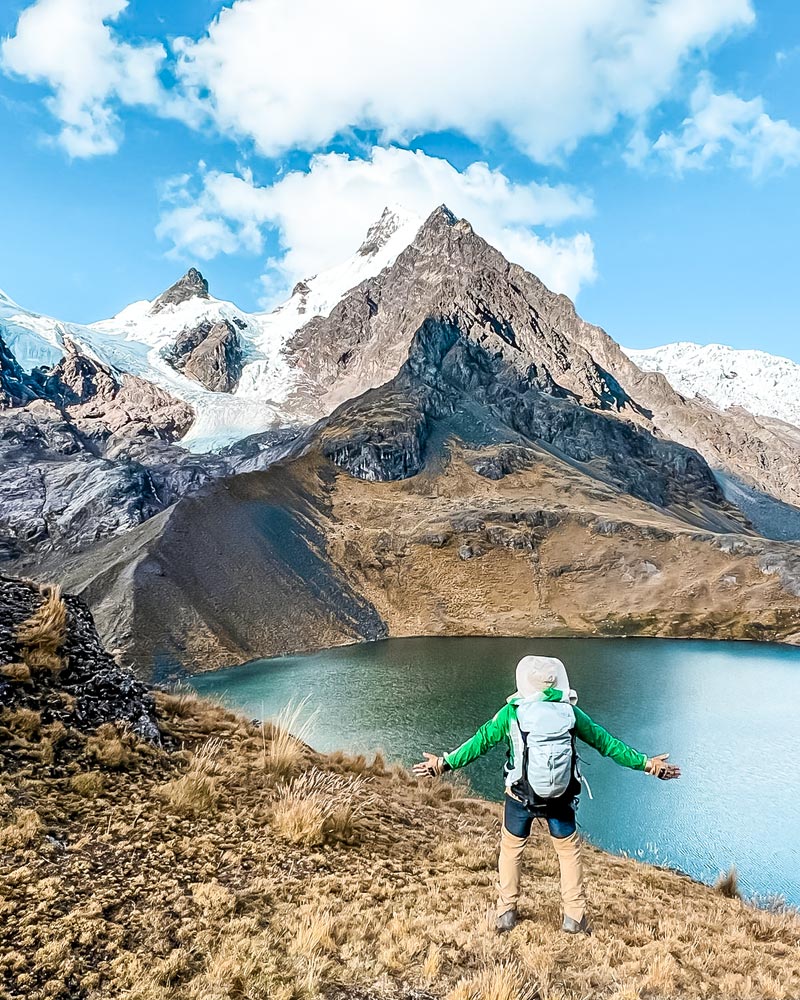
The worship to the Apus in the andes
The Apus are not just beautiful mountains—they possess an energy capable of influencing nature and even people. They are responsible for the fertility of the land, the climate, and the provision of natural resources. Their contribution is vital for the sustenance and well-being of Andean communities and those who seek their help.
For this reason, these populations still carry out ceremonies, celebrations, and offerings in honor of the Apus to receive their blessing for future harvests, and for the well-being of harvests and livestock. Today, many rituals continue to be performed to honor these deities. The mountains are revered with respect and offerings, as they represent a living connection with the earth, balance, and the divine.
Explore Cusco’s Mystical Tourism! If you’re looking to embark on a transformative adventure, Cusco awaits you to explore sacred sites, take part in traditional rituals, and immerse yourself in spiritual practices that have endured for centuries.
The Most Important Ritual: The Offering to the Earth. This is a gift to Pachamama (Mother Earth), offering her various elements typical of the Andes. Many of these include:
- Coca leaves: Considered sacred, they are used to ask for permission, give thanks, and connect with the spirits. They represent life and energy.
- Chicha: A fermented corn drink that symbolizes the union between humans and the earth.
- Seeds and grains: Represent fertility and crop abundance.
- Candies and sweets: Symbolize good wishes, abundance, and the sweetness of life.
- Cigarettes or alcohol: Symbolic offerings of blessing and environmental purification.
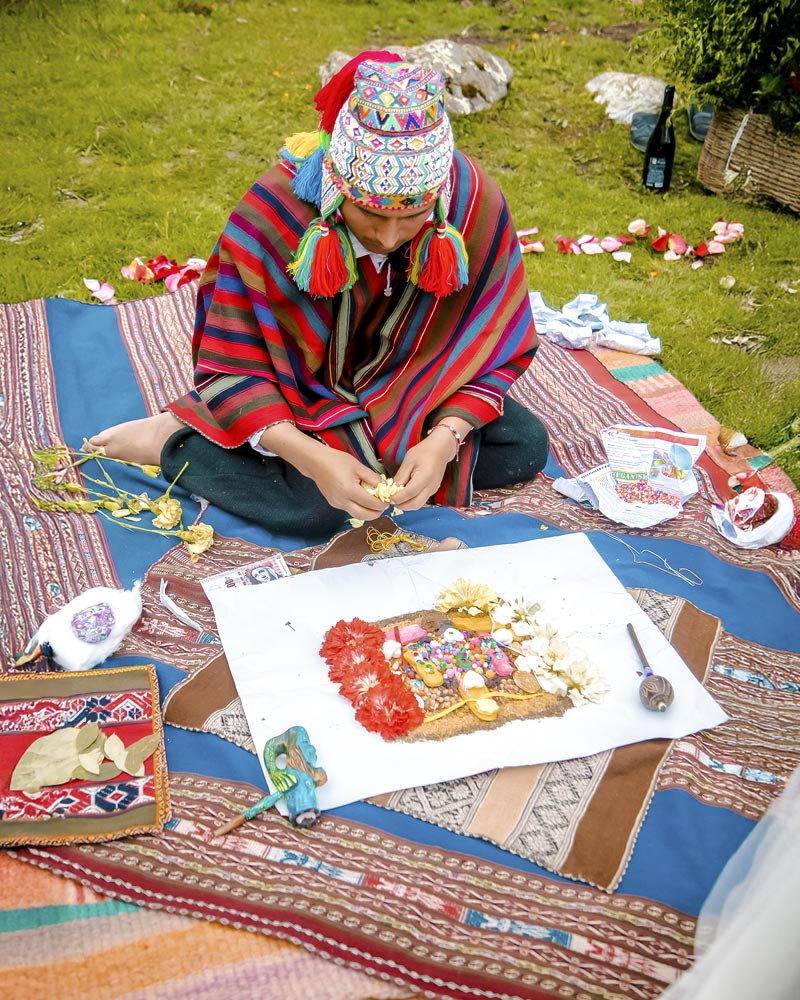
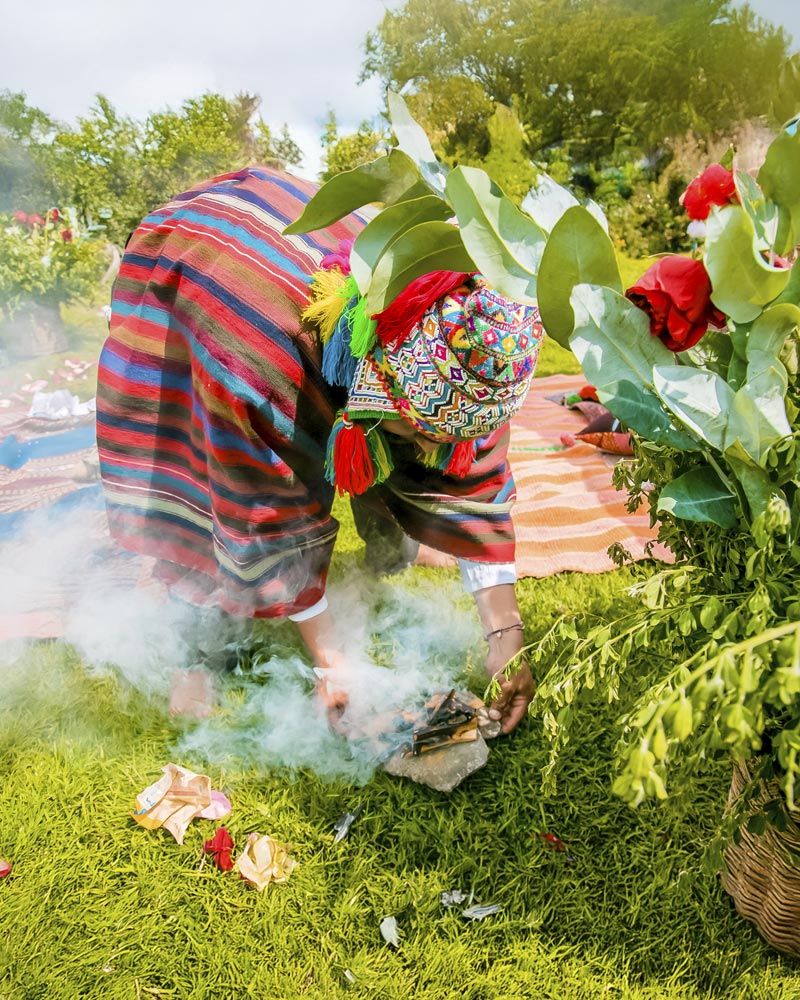
In ancient times, the Incas even included animal or human sacrifices in their offerings. This ceremony aims to ask the Apus and the mountains of the territory for abundance, protection, and prosperity. Today, the ritual is performed by a shaman, or alto misayoc as they are known in the region, who guides the offering with ancestral wisdom and deep respect for nature.
Make your offering before visiting a mountain! It is essential to ask the Apus for permission before entering their territory, as you are crossing sacred lands preserved for centuries. This is a key gesture to ensure a good journey and that everything goes well along the route.
How to make your offering to the earth? Take 3 coca leaves in your hands, ask the Apus for permission with a few words, blow on them to send your intentions to the mountains, and leave them under a rock as an offering to the earth.
Experiential Tourism
Experiential tourism is a form of travel that allows visitors to see the activities and ancestral traditions of a community up close, such as working with wool, preparing traditional dishes, and farming techniques. A bond with the local culture is created, as travelers are able to interact with the inhabitants of the area and learn about their customs and way of life.
These immersive experiences offer the opportunity to connect with Andean spirituality, feel the energy of the Apus, and embark on a deeply transformative journey of personal introspection.
Some trekking routes in Cusco pass through rural areas where small communities keep traditions alive, such as backstrap loom weaving, agriculture using ancestral techniques, raising llamas and alpacas, and performing rituals in honor of Pachamama and the Apus.
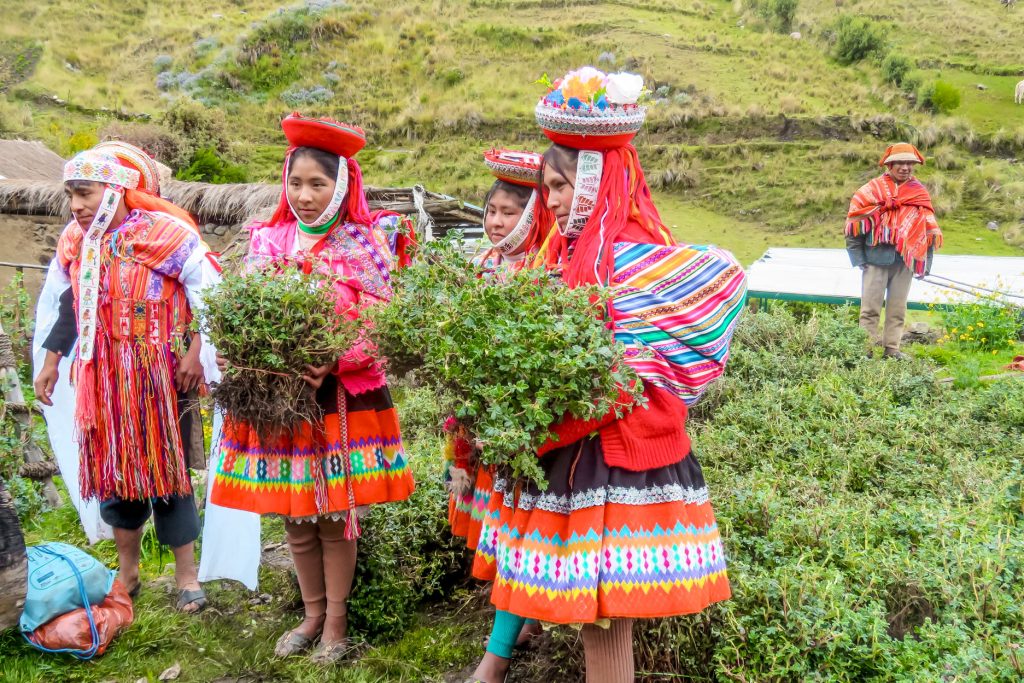
Andean Wedding: A Celebration Full of Magic
Imagine celebrating the most special day of your life in the heart of the Andes mountains, where your union will be blessed by the Apus in a thrilling traditional ceremony.
It may sound like a dream, but it’s a reality. The Andean wedding preserves its ancestral heritage in a modern world and draws inspiration from the magical energy of the environment.
The ceremony includes rituals in the Quechua language, offerings to Pachamama (Mother Earth), traditional music, and deep symbolism that seals the couple’s love in a unique and transcendent way.
It takes place in a sacred location, carefully chosen for its deep spiritual significance. Salkantay Trekking offers you the chance to formalize this union during a Salkantay honeymoon trek, in an intimate and emotional setting, accompanied by authentic Andean rituals.
The Salkantay Trek is one of the highest-rated routes to Machu Picchu, not only for its breathtaking landscapes but also for the spiritual connection it offers. Along the route stands Apu Salkantay, one of the most sacred mountains of Cusco, a symbol of power and protector of the valley. Walking in its presence is a unique experience, perfect for beginning a new chapter in harmony with nature and Andean tradition.
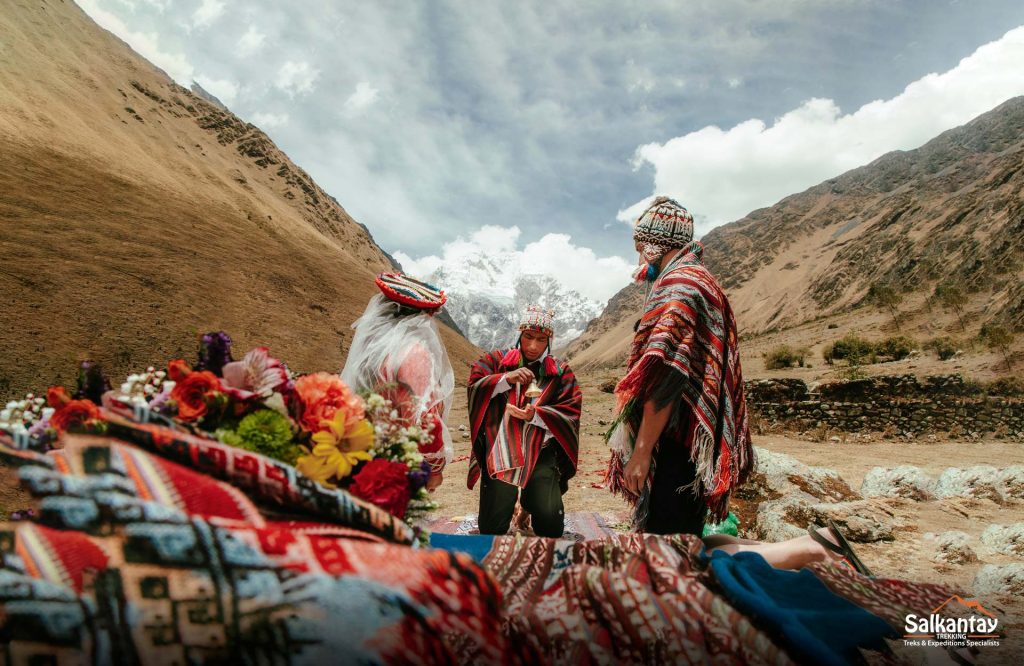
Apus of the Cusco Region
There are many Apus in Peru, but Cusco—the ancient capital of the Incas and one of the great cities of the Andes—holds a high concentration of sacred mountains.
Each mountain has its own spirit, and each region has its own ‘Apu’ or protective mountain. Here are some of the most important Apus of Cusco, considered guardian spirits due to their deep spiritual and geographical significance.
Ausangate
Apu Ausangate is the highest mountain in the Cusco region and the fifth-highest peak in Peru, standing at 6,372 meters (20,905 feet). Its immensity, imposing presence, and glaciers make it notable not only for its beauty but also for its important role as a powerful protector and provider of water and fertility for the surrounding communities. This Apu has nourished the lands of the region with its lagoons and rivers, serving as a rich source of life-sustaining water for the communities.
For this reason, it holds deep spiritual significance in the Andean world. One of the most important events connected to Ausangate is the festival of the Lord of Qoyllur Riti, a massive pilgrimage that merges ancestral Andean beliefs with Christian faith. Thousands of people gather each year at the foothills of Apu Ausangate to celebrate with traditional dances, processions, and offerings to the earth.

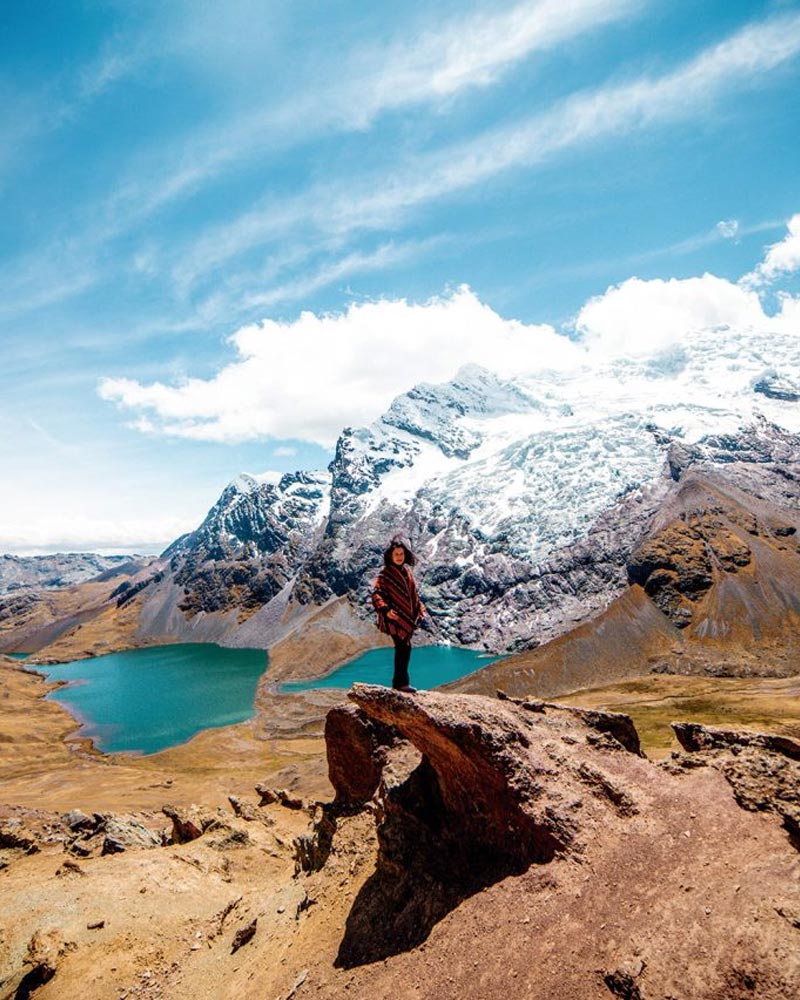
Ausangate and Community-Based Tourism
More community tourism experiences have emerged in Ausangate in recent years. This is a remote area, far from the city of Cusco and other large towns, so most of its inhabitants live in rural zones. The trails that cross this snow-capped mountain pass through these small communities, allowing travelers to interact with locals and learn about their customs.
Benefits of community-based tourism:
- For residents: Generates income and strengthens cultural pride.
- For visitors: Offers an authentic and transformative experience.
- For sustainability: Promotes respect for the environment and local cultures.
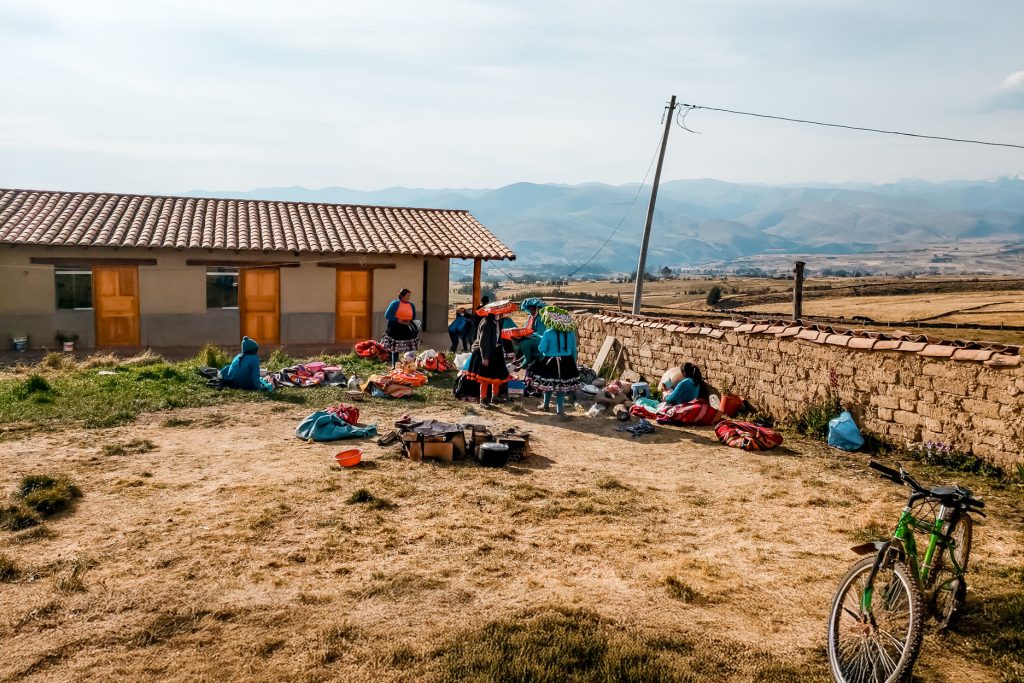
How to Get to Apu Ausangate
The Ausangate Trek is one of the most spectacular routes in the Peruvian Andes. Over the course of five days, you’ll follow a circuit around Apu Ausangate, encountering glaciers, lagoons, and hot springs. The trail invites you to cross remote landscapes and high mountain passes, creating a deep connection with Andean spirituality.
The entire trek takes place above 4,500 meters (14,763 feet), which requires good physical endurance and prior acclimatization to the altitude. However, the effort is well worth it, as you’ll enjoy privileged views of Apu Ausangate dominating the horizon throughout the five days. In addition, contact with local communities deeply enriches the experience.
Walking around Ausangate Mountain is both a challenging and profoundly spiritual experience. It is ideal for those seeking an authentic connection with nature, Andean culture, and the mysticism of the Apus.
We recommend that you take special care if you travel to the Ausangate tour during the rainy season, due to the amount of lightning in the area and rainfall. Always travel with an authorized and properly prepared agency to ensure your safety and comfort.
Embrace Apu Ausangate! There are many routes and tours to Ausangate that surround this incredible mountain. Fall in love with the Andean landscapes that combine snowy peaks, turquoise lagoons, and even the famous Rainbow Mountain, Vinicunca.
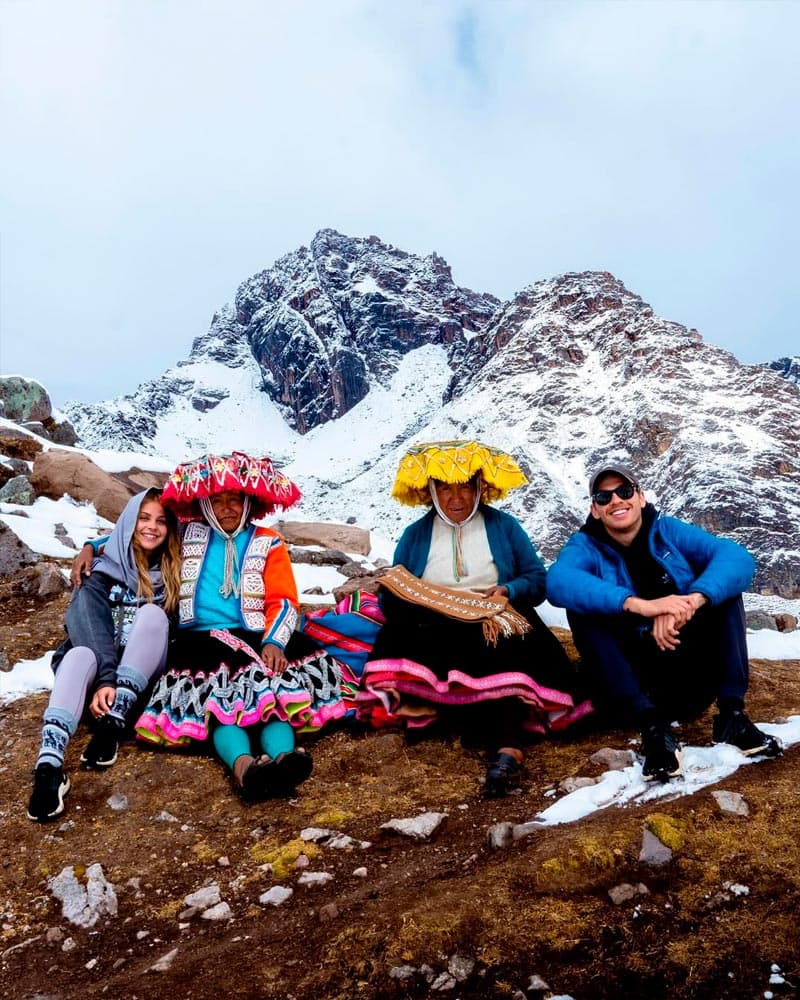
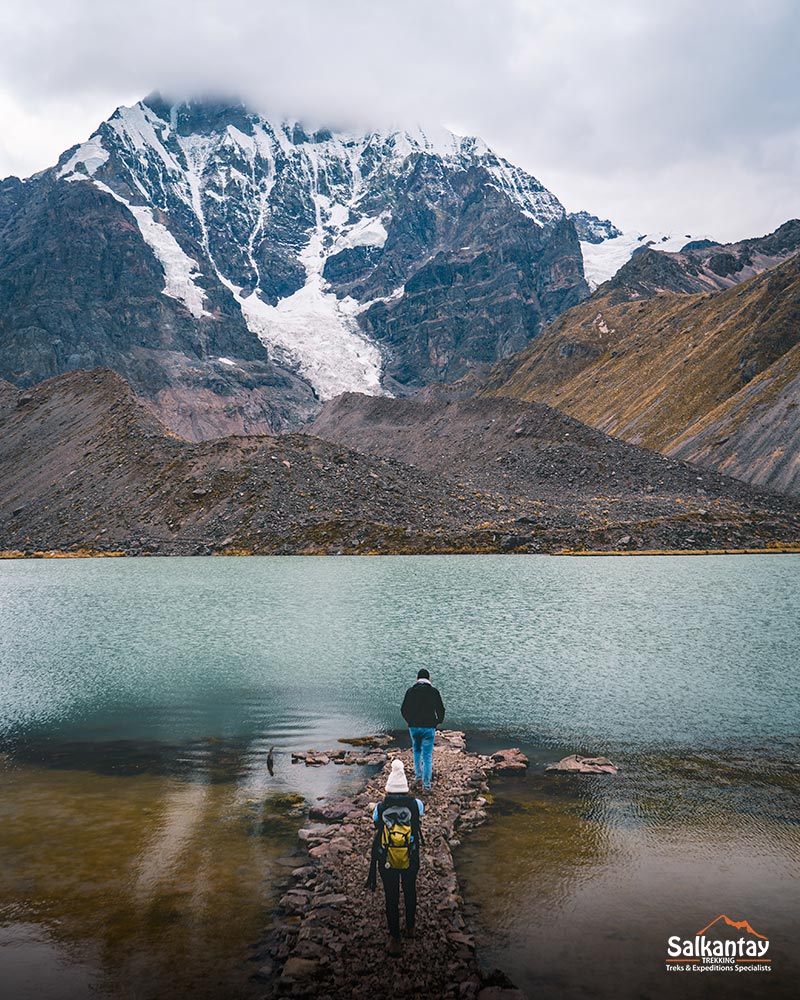
Salkantay
Apu Salkantay is another prominent deity among the sacred mountains of Cusco. Standing at 6,271 meters (20,574 feet), it is the highest peak in the Vilcabamba mountain range, located northeast of the city and not far from the citadel of Machu Picchu. The name Salkantay comes from Quechua and translates to “wild mountain” or “untamable mountain.” And indeed, reaching it is a true challenge! Due to its steep slopes, numerous avalanches have occurred there in the past, giving meaning to its fearsome name.
How to Get to Apu Salkantay
The Salkantay Trek, recognized as the best alternative route to the Inca Trail to reach Machu Picchu, crosses challenging terrain, altitude changes, and diverse climates. On the second day of the classic route, you ascend to the Salkantay Pass (4,630 meters / 15,190 feet) via a steep and rocky trail that winds through high-mountain landscapes.
This ascent, which takes between 3 and 4 hours, is one of the most demanding parts of the trek—but also one of the most unforgettable. The reward is unmatched: a privileged view of Apu Salkantay right before your eyes, surrounded by glaciers, silence, and the pure energy of the Andes.

Watch Apu Salkantay at sunrise! On the Salkantay route, you’ll sleep in our exclusive campsites Sky Camp, featuring dome-shaped rooms with glass ceilings. At night, you’ll gaze at the starry sky, and at dawn, you’ll wake up to an unforgettable view of Apu Salkantay and Humantay Mountain.
Apu Salkantay is much more than an imposing mountain—it’s a symbol of strength, spirituality, and connection with nature. Visiting it means entering a sacred world, where each step brings you closer to the heart of Andean culture and the greatness of the Apus.
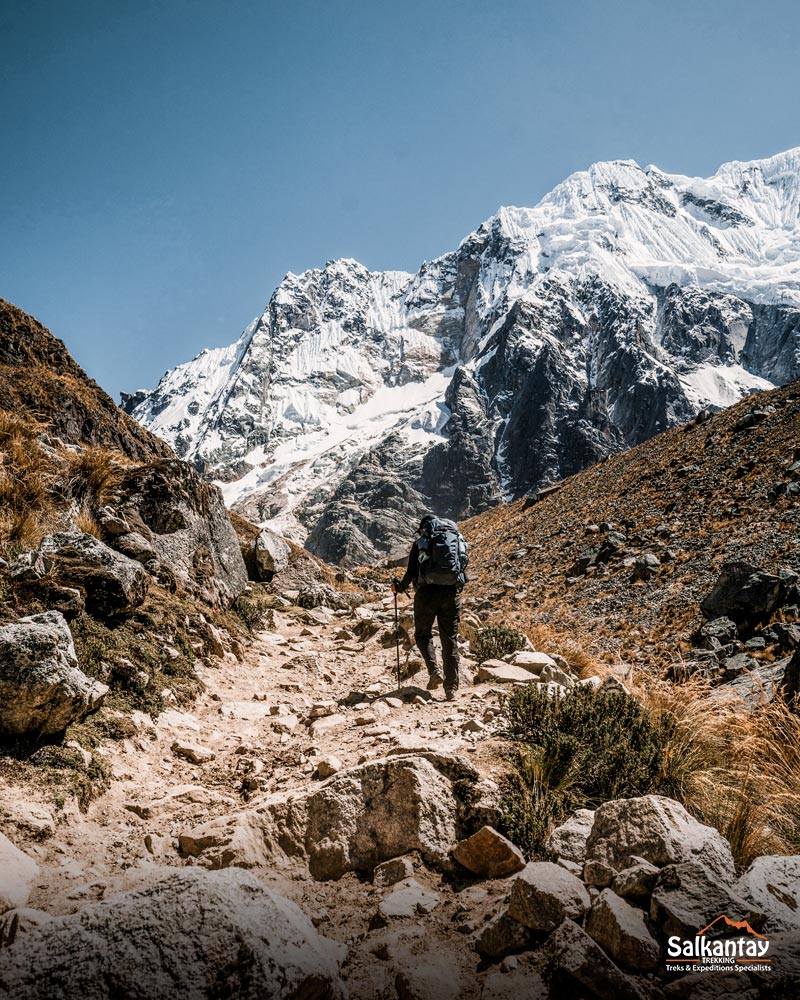
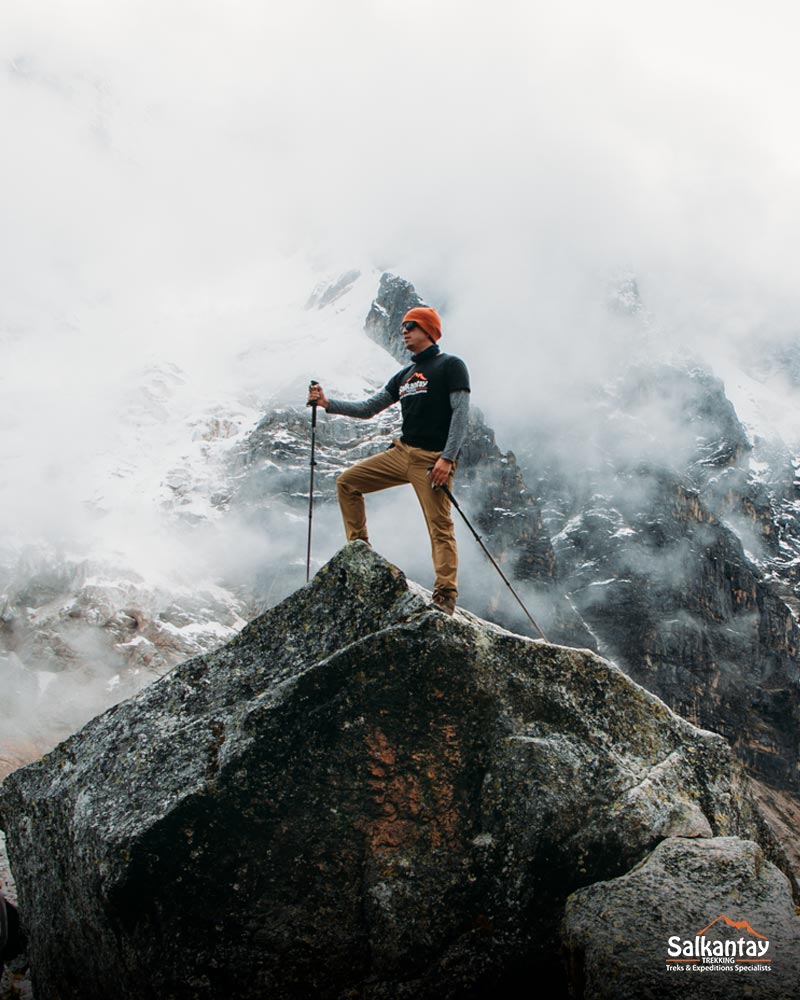
Verónica
Apu Verónica is one of the great mountains of the Sacred Valley of the Incas, located in the province of Urubamba. This area sits at a lower altitude than the city of Cusco, and its slightly warmer climate promotes fertile lands. For this reason, Mount Verónica is believed to have a strong influence on agriculture and is considered a protector of the harvests.
Apu Verónica is also known as Wakay Willka, which in Quechua means “sacred tear” or “sacred mountain that weeps.” It is one of the few Apus with a feminine identity and is strongly associated with the concept of fertility.
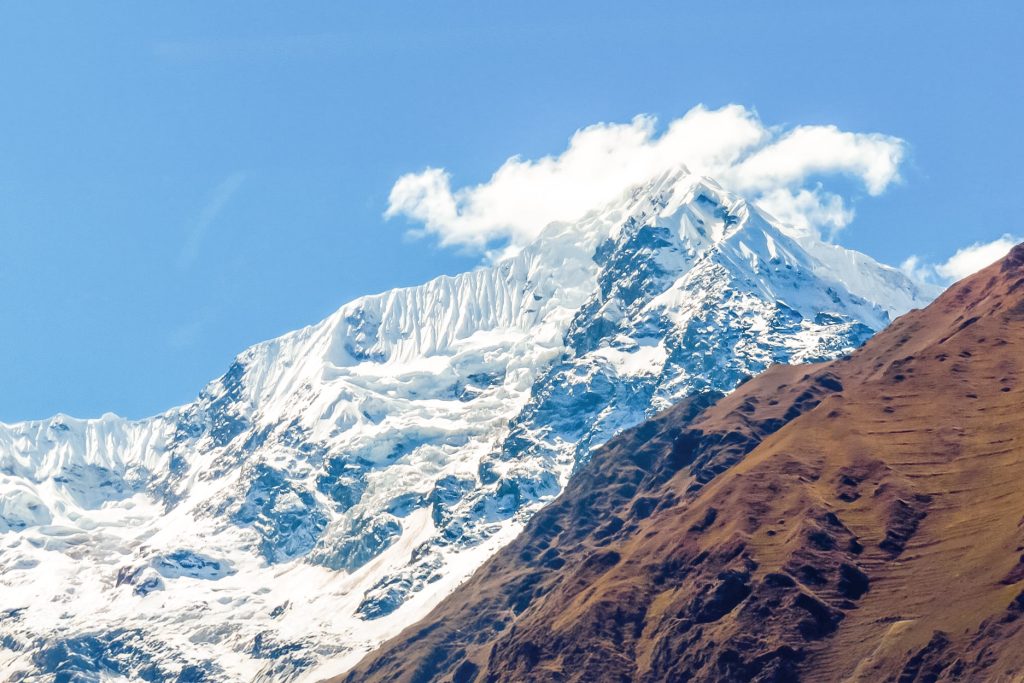
How to Get to Apu Verónica
One route that allows you to contemplate this mountain perfectly is the Inca Quarry Trail, which also ends at the mysterious Inca citadel of Machu Picchu. This alternative route, with fewer crowds, offers an immersion in Inca history, taking you on a tour of the ancient quarries where they extracted the enormous stones for their monuments.
On the first day, you will arrive at Inti Punku, or “Sun Gate” (3,900 meters / 12,795 feet), in the town of Ollantaytambo, an ancient ceremonial site from where you can enjoy a spectacular view of Apu Veronica. It is a magical moment of the journey, where the Andes reveal their grandeur and spirituality in an unforgettable way.
If you want to reach this wonder of the world via less-traveled paths, check out our blog on alternative routes to the Inca Trail and Salkantay, and enjoy a truly authentic experience.
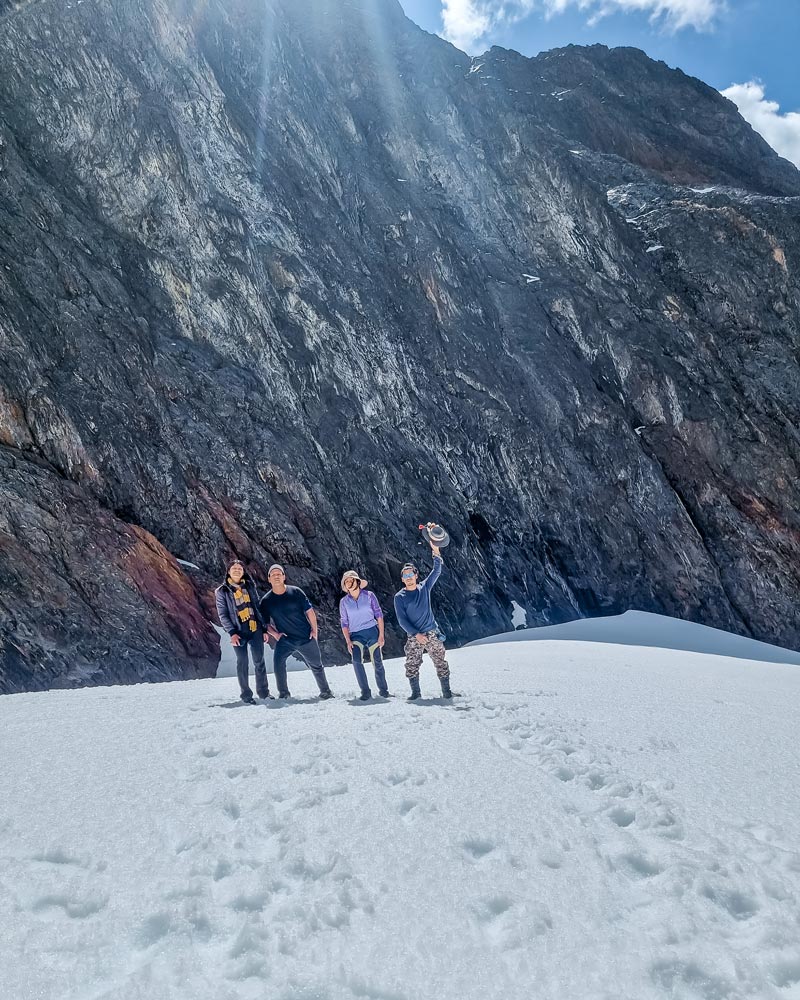
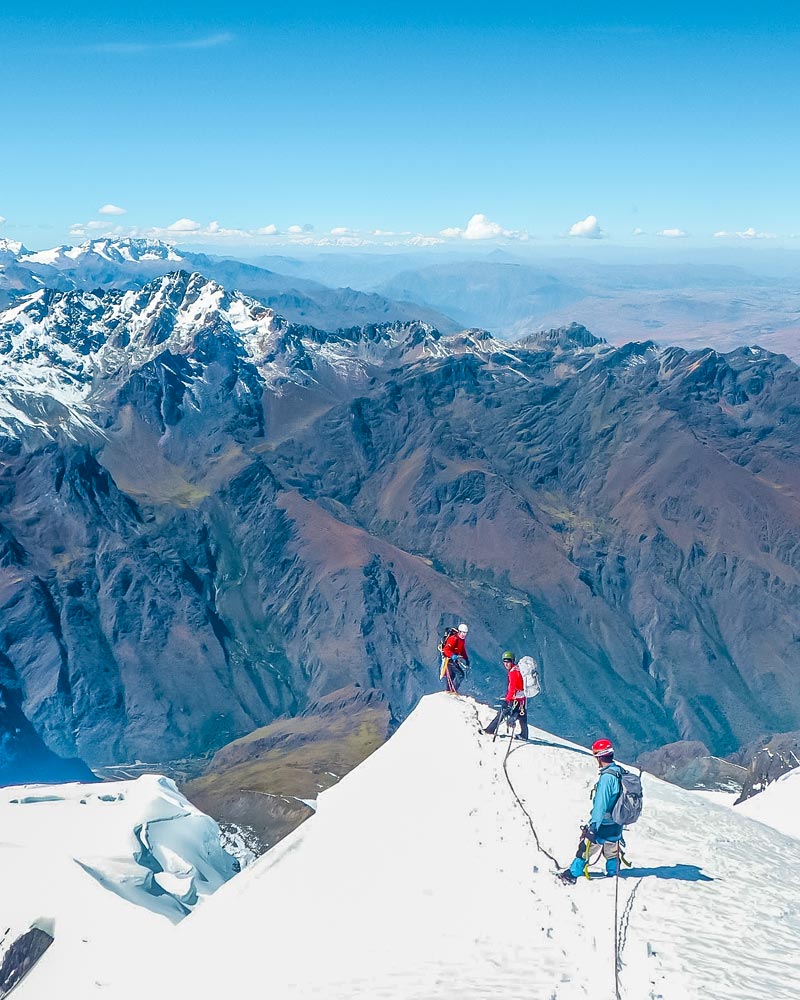
Apus of the City of Cusco
The city of Cusco lies in a vast valley surrounded by majestic mountains considered sacred. It is said that these peaks protected the land and gave life to the valley through their waters and energy.
Although a total of 19 Apus are recognized around the city, there are 4 main mountains that guard Cusco:
Mama Simona
A sacred mountain located northwest of Cusco, considered a feminine protective spirit in the Andean worldview. Her energy is gentle and maternal, and she is one of the closest guardian hills to the city.
How to get there: From Cusco’s Plaza de Armas, take public transportation toward the district of Santiago (Av. La Cultura – Santiago). From the Ccasccaparo and Alto Qosqo sectors, continue along vehicle-accessible roads to the surroundings of Cerro Mama Simona, where a short uphill walk begins along communal footpaths. Local residents use this access; going with a guide is recommended, as this is a tutelary hill.
Huanacaure
Legend says this Apu represents the mythical Ayar Hucho, brother of Ayar Manco, the founder of the Inca Empire. The mountain contains Inca archaeological remains that once served as an oracle.
How to get there: From Cusco, follow the Cusco – San Jerónimo – Saylla road. Near the community of Collana, take a dirt-road detour toward the foothills of Cerro Huanacaure. From that point, a hike of approximately 1.5 to 2 hours leads to the archaeological summit. This route is used by researchers, pilgrims, and local villagers from the South Valley.
Pachatusan
Known as “the one who holds the earth” (pacha means earth, and tusa means support in Quechua). It is located above the sanctuary of the Señor de Huanca, an important religious figure in Cusco.
How to get there: From Cusco, take the Cusco – Urcos highway (Interoceanic Road) to the turnoff toward the Sanctuary of the Lord of Huanca, located near the district of Oropesa. From the sanctuary, pilgrimage trails ascend toward the slopes of Apu Pachatusan. Every year, thousands of devotees walk this route during religious festivities.
Senqa
It is believed to have the power to predict rainfall. When the sky over Senqa darkens, rain is approaching. These rains often refresh the Saqsaywaman area and then flow down through the Saphy and Choquechaca streams.
How to get there: Access is from the upper neighborhoods of Cusco, especially through the San Cristóbal and Saqsaywaman sectors. From the Saqsaywaman archaeological complex, continue on foot along high-altitude trails toward Cerro Senqa. Access is direct from the city, and the hike takes between 45 minutes and 1 hour, depending on the starting point.
These four mountains not only protect the city but also embody the living connection between Cusco and its natural surroundings—a deep Andean spirituality that still lives on in the hearts of its people.
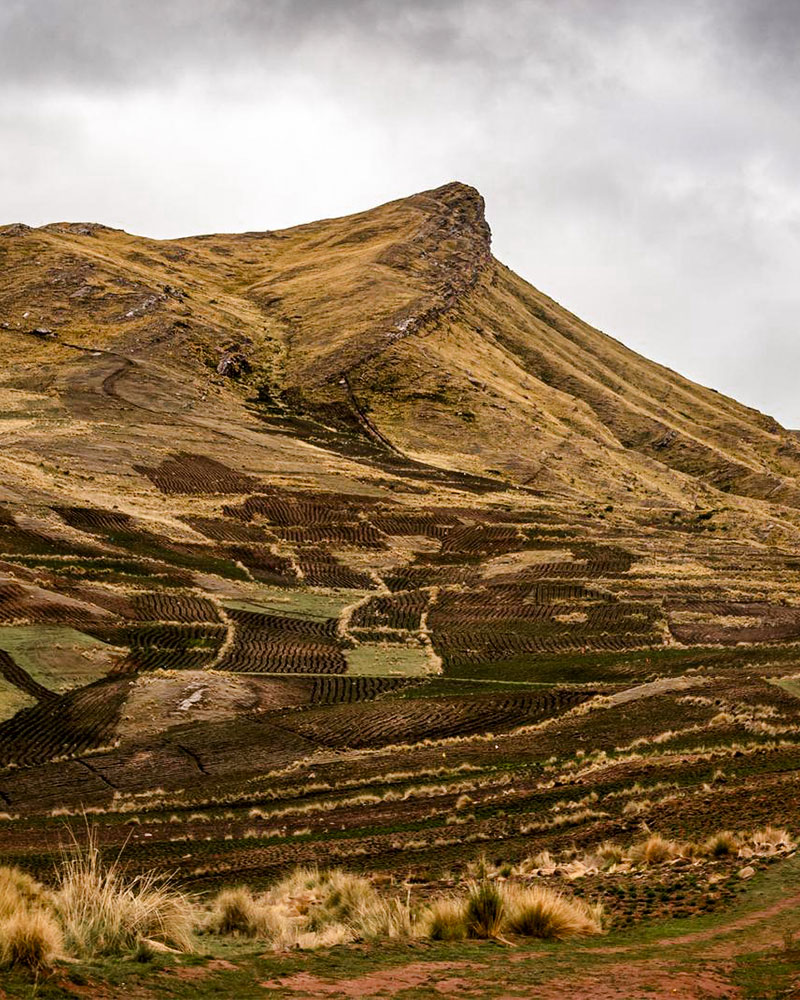
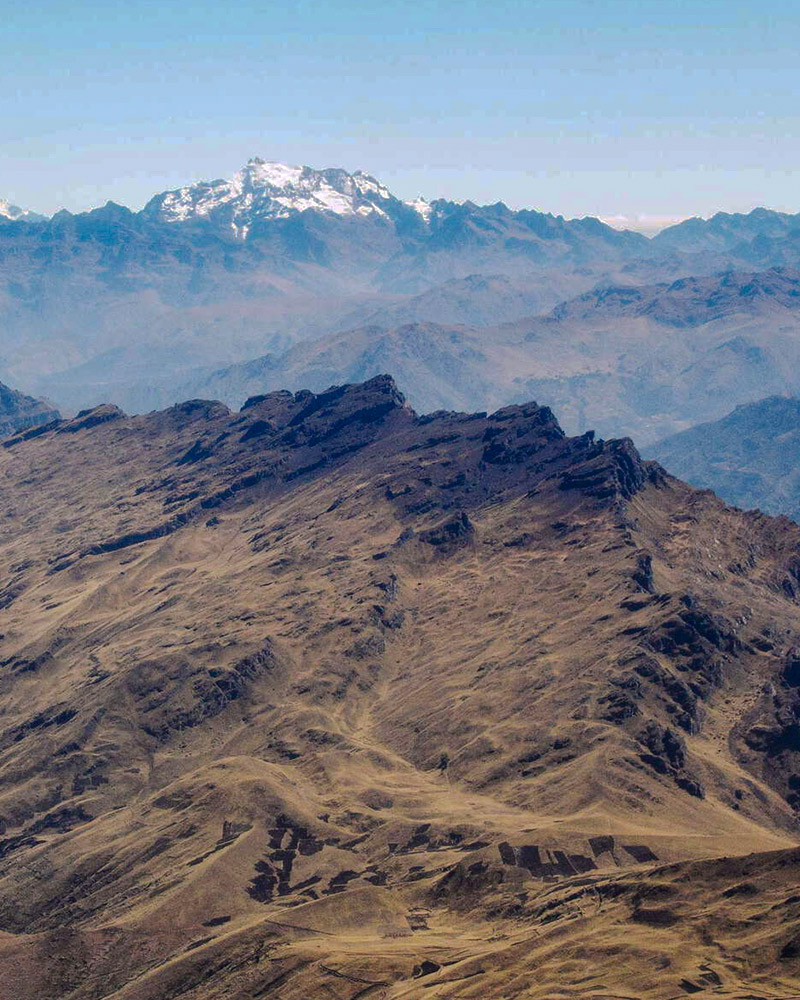
Tutelary Hills of the City of Cusco
In addition to Mama Simona, Huanacaure, Pachatusan, and Senqa, Andean tradition recognizes other sacred hills that are also part of Cusco’s spiritual protection system. Among the most notable are:
- Cerro Sinqa: Linked to the control of rainfall and water.
- Cerro Picchu: Guardian of the northern sector of the valley.
- Cerro Wanakauri Chico: Associated with ancient initiation rituals.
- Cerro Atalaya: A natural lookout point over the valley.
- Cerro Pukamoqo: Related to soil fertility.
- Cerro K’enqo: Directly connected to astronomical and ceremonial rituals.
- Cerro Qolqanpata: Protector of ancient Inca storehouses.
- Cerro Teteqaqa: Related to the spiritual protection of lineage.
- Cerro Sacsayhuman Chico: Secondary guardian of the ceremonial complex.
- Cerro Choquepukio: Connection between Cusco and the South Valley.
- Cerro Oqoruro: Associated with springs and water sources.
- Cerro Killke: Protector of ancient pre-Inca routes.
- Cerro Tankarpata: Related to agricultural zones.
- Cerro Qataqata: Natural sentinel of the eastern sector.
- Cerro Ch’ulluni: Associated with the care of livestock.
- Cerro Picol: Protective energy of the peripheral valley.
- Cerro Hatun Choqo: Related to abundance and agricultural production.
- Cerro Chocco: Linked to ancient population centers.
- Cerro Wimpillay: Related to springs and wetlands.
Together with the main Apus, these tutelary hills form a great system of spiritual and energetic protection surrounding the city of Cusco, regarded since ancient times as a living network of balance between human beings, nature, and the sacred Andean world.
Other Important Apus in Peru
Peru is a country rich in natural monuments, with a significant portion of its territory located in the Andes. Beyond the city of Cusco, other highland regions are home to major mountains that have been revered since pre-Inca times.
- Apu Coropuna – 6,425 m / 21,079 ft: The highest volcano in southern Peru, located in Puno. It has been considered a sacred water source since pre-Inca times.
- Apu Chachani – 6,075 m / 19,931 ft: Located near Arequipa, this dormant volcano is venerated as the protector of the city.
- Apu Ampato – 6,288 m / 20,630 ft: Known for the discovery of the “mummy Juanita,” sacrificed during Inca times in ancient offerings to the Apus.
- Apu Huascarán – 6,768 m / 22,205 ft: The highest mountain in Peru and one of the most sacred. Located in the Cordillera Blanca, it symbolizes strength and Andean greatness.
- Apu Misti – 5,822 m / 19,101 ft: An iconic volcano of Arequipa, with great spiritual significance; associated with creation, fire, and protection.
- Apu Sara Sara – 5,505 m / 18,061 ft: A sacred mountain in Ayacucho, revered for its pure waters and its connection to fertility and crops.
All of these mountains and volcanoes across Peru hold immense power, making them spiritual guardians for Andean communities. Their imposing presence not only shapes the landscape but also the beliefs, rituals, and cultural identity of those who live around them.
Peru awaits you to reveal all its natural wonders and to accompany you on a journey you will never forget. Make it a reality with Salkantay Trekking, specialists in adventures designed just for you.
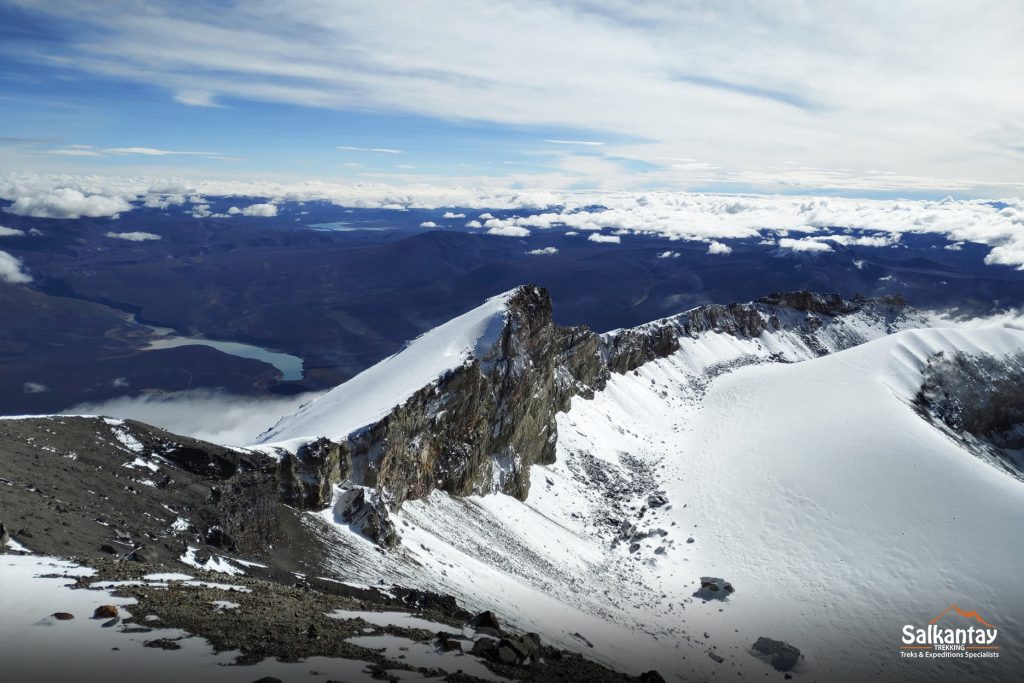
Frequently Asked Questions about the Apus of Peru
1. What is an Apu in Andean cosmology?
An Apu is a sacred mountain considered a protective deity in Andean cosmology. It is believed that the Apus watch over communities, regulate the climate, provide water, and maintain the balance between human beings and nature.
2. Why are mountains considered sacred in the Andes?
Because since pre-Inca times they have been attributed with life, spiritual energy, and power over natural cycles such as rain, crops, and the fertility of the land. For the Andean peoples, mountains are not merely geography, but living beings.
3. What does the word “Apu” mean?
The word “Apu” comes from the Quechua language and means “lord” or “authority.” It was the term the Incas used to refer to mountains of great spiritual and territorial importance.
4. What rituals are performed in honor of the Apus?
The most important ritual is the offering to Mother Earth, or Pachamama, in which coca leaves, chicha, seeds, sweets, and other symbolic elements are presented as a sign of gratitude and as a request for protection from the Apus.
5. Who can perform a payment to the earth?
Traditionally, the ritual is guided by a high misayoc or Andean shaman, who possesses the ancestral knowledge to communicate spiritually with the Apus. However, any visitor may perform a simple offering in a respectful manner.
6. Is it mandatory to perform a ritual before visiting a sacred mountain?
It is not mandatory, but it is highly recommended as an act of cultural and spiritual respect. Asking permission from the Apu is part of Andean traditions before entering territories considered sacred.
7. Which are the most important Apus of Cusco?
Among the most important are Apu Ausangate, Apu Salkantay, and Apu Verónica, as well as the four protective Apus of the city of Cusco: Mama Simona, Huanacaure, Pachatusan, and Senqa.
8. What is the relationship between the Apus and trekking tourism?
Many of the most important trekking routes in Cusco, such as Salkantay, Ausangate, and the Inca Quarry Trail, cross sacred territories. These hikes not only offer spectacular landscapes, but also a deep spiritual connection with the Apus.
9. What is experiential tourism related to the Apus?
It is a form of tourism in which travelers live with Andean communities, take part in their daily activities, and learn firsthand about their rituals, beliefs, and traditions related to Pachamama and the Apus.
10. What is the festival of the Lord of Qoyllur Rit’i and why is it linked to Ausangate?
It is one of the largest pilgrimages in the Andes and takes place in the surroundings of Apu Ausangate. It blends Andean and Christian beliefs, with dances, processions, and rituals dedicated to this sacred mountain.
11. Do the Apus exist only in Cusco?
No. Although Cusco concentrates some of the most important Apus in Peru, the veneration of sacred mountains extends across much of the South American Andes. In Peru, in addition to Ausangate and Salkantay, notable mountains include Huascarán (Cordillera Blanca), Misti and Chachani (Arequipa), Coropuna (southern Peru), Ampato (where the mummy Juanita was discovered), and Sara Sara (Ayacucho).
At the South American level, sacred mountains also include Aconcagua in Argentina, Illimani in Bolivia, Chimborazo and Cotopaxi in Ecuador, as well as Nevado del Ruiz in Colombia, all of them associated with ancient Andean beliefs about fertility, protection, and spiritual balance with nature.
12. What role do the Apus play in the daily life of Andean communities?
The Apus are considered protectors of livestock, crops, climate, and health. Many community, agricultural, and spiritual decisions are made taking into account the relationship with these sacred mountains.
You Might Be Interested In
- Ausangate Mountain: The Ultimate Guide
- Salkantay Mountain: The Complete Guide.
- Salkantay or Ausangate: Which Trek to Choose in Peru?
- Ausangate: Essential Information Before Your Hike
- Discover Inca Astronomy from the Sky Camp
- Ausangate and Community Tourism
- Qoyllur Rit’i and Tayancani | Traditional Celebration in the Andes
- Salkantay 2026: The Complete Trekking Guide

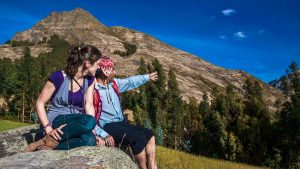
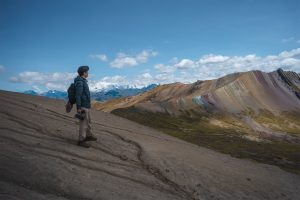
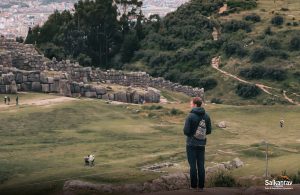
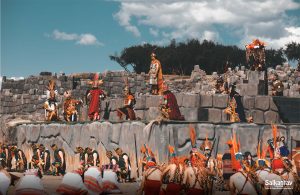
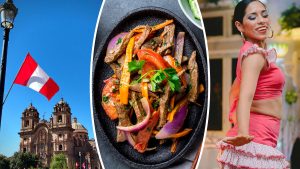
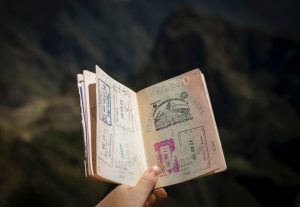
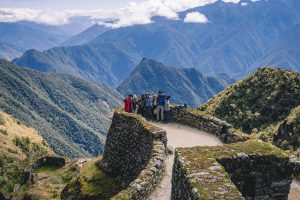

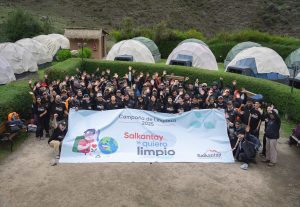

Leave A Reply